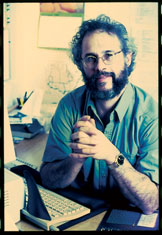By Steve Oppenheimer
(March 2002)
Obviously, DVD is the Hot New Thing. We love it, we’ve written about it (see “World of Options” in the August 2001 issue), and we are working on more stories about it for future issues.
Professional-level DVD authoring can still be difficult, and though DVD-R burners are starting to become affordable, they are not yet common items in the average personal studio, and many consumers have not yet bought players. For those reasons, DVDR is just beginning to become a practical delivery medium for the average personal-studio owner.
On the other hand, good ol’ CD-R and CD-RW remain extremely popular and highly accessible. Almost every consumer has a CD Audio player, and most of the newer ones play music CD-Rs. The majority of modern computers have CD drives that can read audio, video, and data CD-Rs. For many purposes, then, you are still best off delivering your product on CD.
You can do a lot more with CDs than many people realize, including creating enhanced discs that incorporate multiple types of rich media, such as music, video, text, animation, and graphics. For a musician/producer with products to market and distribute, CD remains a crucial delivery medium.
In fact, so ubiquitous is the humble CD that most of us take it for granted. Even EM‘s publisher, a knowledgeable musician with a background in music technology, was surprised when I told him that I intended to put a story about CD-R on our March cover. After all, he posited, the CD isn’t news; everyone knows about CD technology.
No, they don’t. Although CD has been around since the early 1980s and CD-R is now a mainstream technology, many studio-savvy musicians don’t understand how the CD technologies work, why they sometimes don’t work as expected, and how to get the most out of them. That lack of understanding isn’t surprising when you realize that things in the world of CD-R/RW are not always as they appear to be. To fill this information gap, I called on two top authors with very different backgrounds.
Former EM technical editor Gary S. Hall is one of those rare people who understands music technology at an engineering level and can communicate often difficult technical concepts in language that the average reader can understand. Therefore, I gave him the job of explaining the underlying technology behind CD-R and how to get the best results when burning discs. The result is “Burning Ambitions” (p. 58), a clear and thorough article that is interesting and enlightening.
David Battino, whose many credits include editing the 1999, 2000, and 2002 editions of EM‘s annual Desktop Music Production Guide, has a knack for explaining how to do cool things with music technology that may not have occurred to you. Having himself created highly successful enhanced CDs, he was the perfect choice to explain it to the rest of us, and he delivers the goods big-time in “More Than Meets the Ear” (p. 76). If you want to take full advantage of CD-R’s potential, this story is a must-read.
After reading the stories, you will not only know more about CD and CD-R/RW technology than most musicians, you will have acquired a useful bag of tricks for burning, ripping, and fully utilizing this popular but strange medium. Enjoy!
